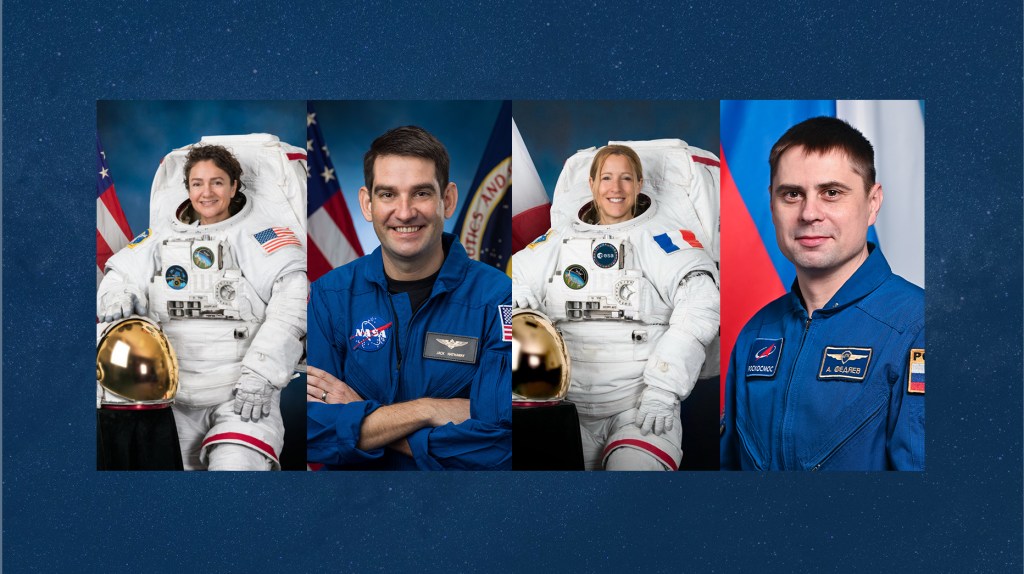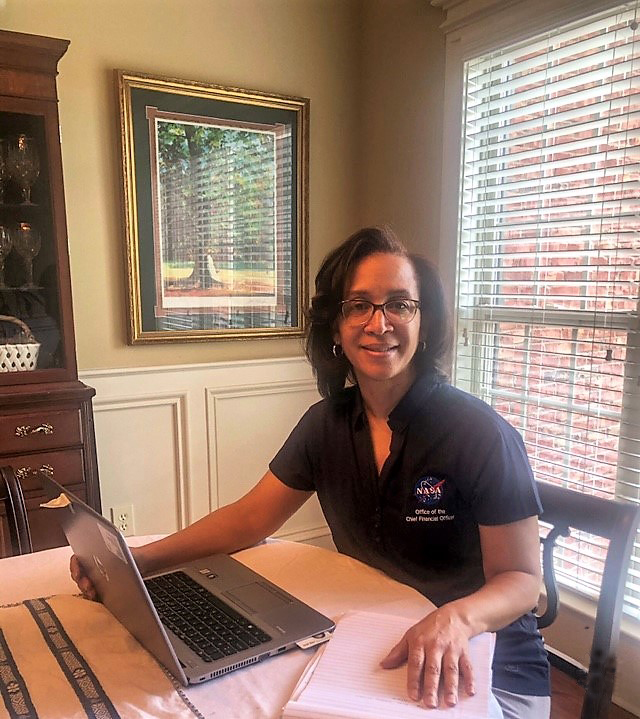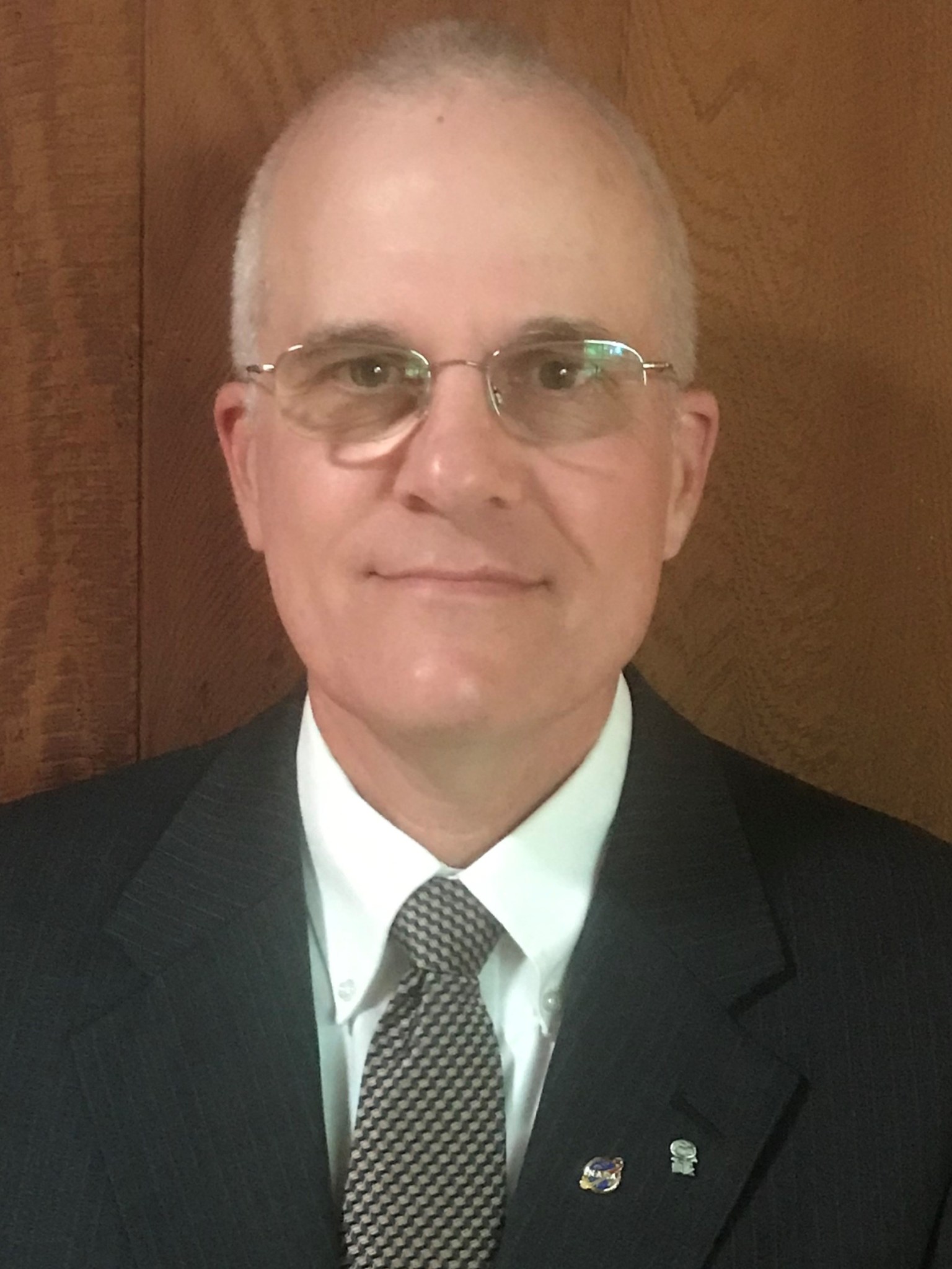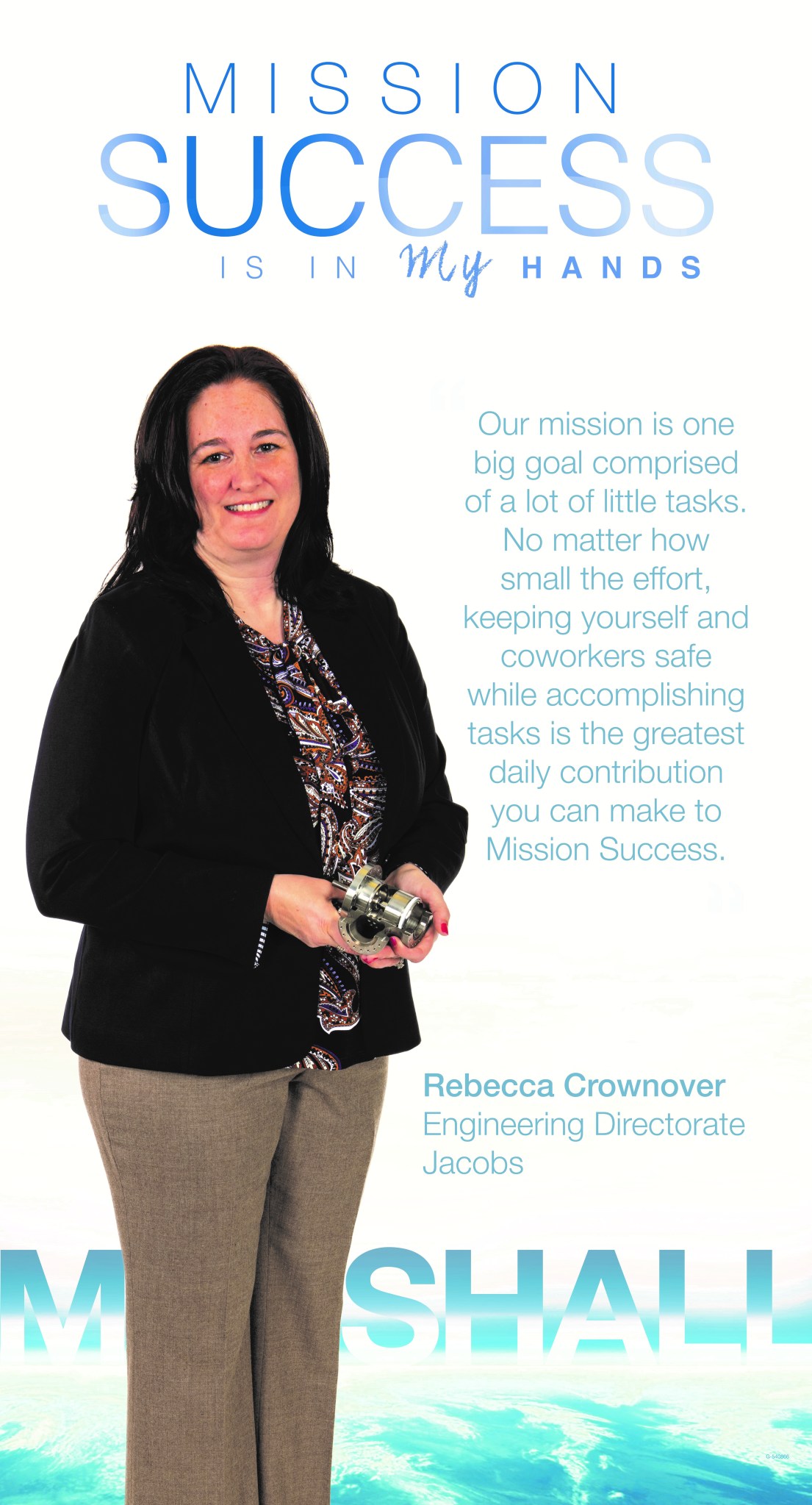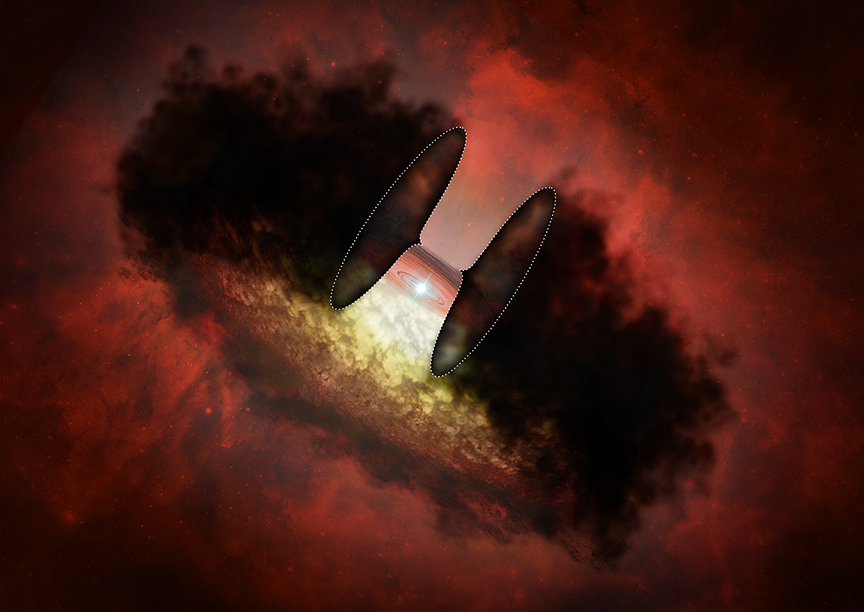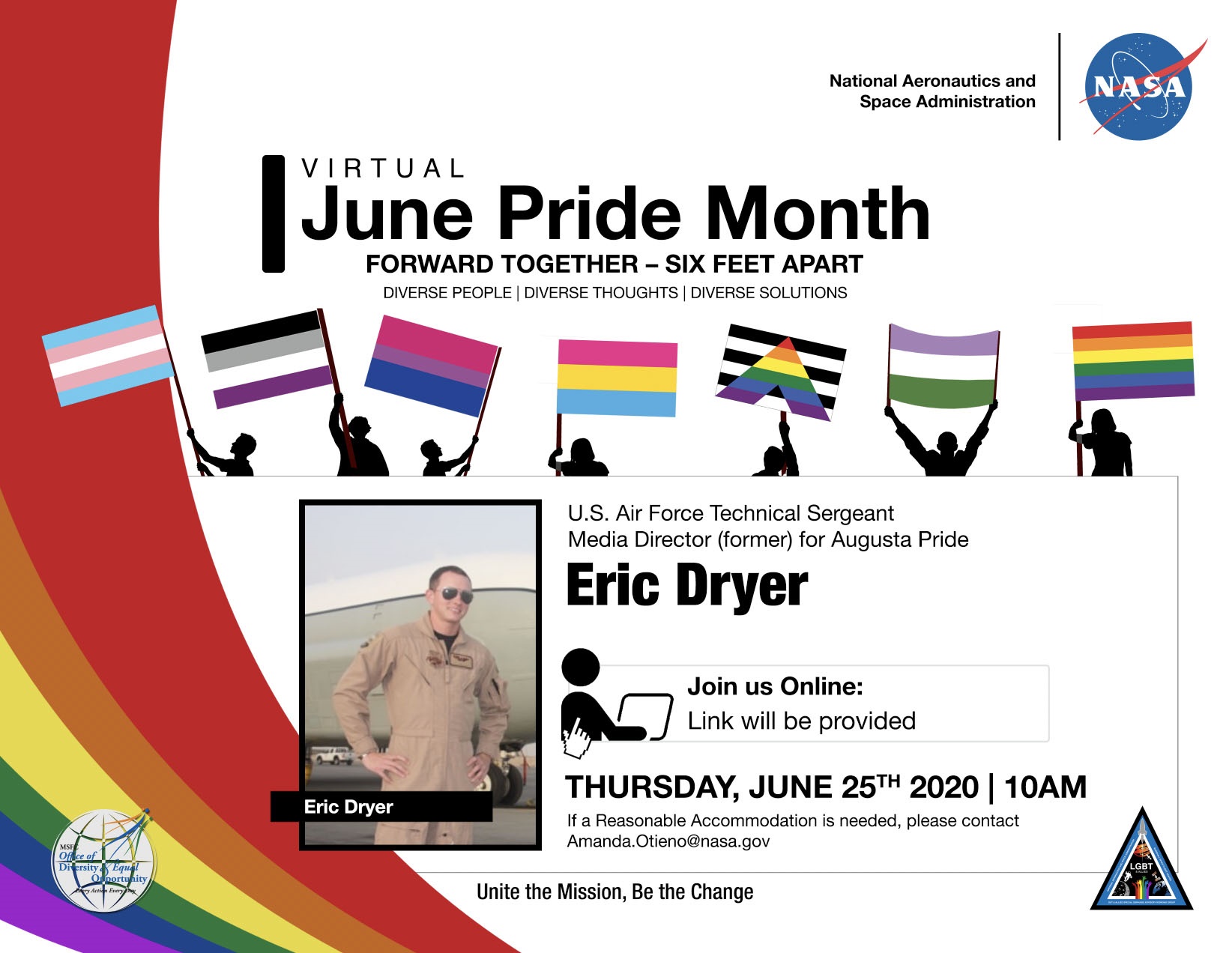In This Week’s Star
- Take 5 with Rhega Gordon
- Greg Swanson Recognized with Golden Eagle Award for Artemis I Contributions
- Mission Success is in My Hands: Rebecca Crownover
- Five Marshall Team Members Honored as a HEO HErO
- X-rays From New Star Hint at Sun’s Earliest Days
- Marshall to Host Air Force Tech. Sgt. Eric Dryer as Pride Month Speaker June 25
- OSIRIS-REx Produces Nightingale Mosaic, Highlighted on ‘This Week @NASA’
- This Week in NASA History: First Launch of Spacehab – June 21, 1993
Take 5 with Rhega Gordon
Rhega Gordon has led the Office of the Chief Financial Officer at NASA’s Marshall Space Flight Center since early 2019, overseeing all integrated Marshall and NASA financial management processes, including all stages of planning, programming, budget and execution activities, and guidelines for distributing financial resources.
A native of Athens, Alabama, Gordon began her NASA career in 1991, shortly after she earned a bachelor’s degree in electrical engineering from the University of Alabama in Huntsville.
Gordon recently chatted remotely with Marshall media specialist Rick Smith to discuss CFO’s role in executing Marshall’s work and NASA’s mission – and her tips for staying focused in uncertain times and balancing work and play to keep things in perspective.
Question: What is the team environment like in Marshall’s Office of the Chief Financial Officer? How do you encourage collaboration and integration?
Gordon: The office is a highly skilled, strategically co-located team that supports all Marshall organizations, programs, and projects. We’re plugged in all across the center, providing tailored, collaborative services via six office divisions: assurance and controls; accounting operations; engineering support; mission support and integration; budget integration and analysis; and the project support office. All these specialty teams leverage the same tools, provide similar deliverables, and support one goal: enabling mission success in all our exploration and science endeavors.
We have so many talented individuals with great analytical skills. The best part? They regularly share knowledge, best practices, and lessons learned, both formally and informally. I am most proud of the way this group organically assists one another.
Question: How does CFO embrace partnerships to help NASA put the first woman and next man on the Moon by 2024?
Gordon: We partner closely with our programs and projects – and also support their academic, government, industry colleagues, and contractors – to ensure they have the resources needed to perform their mission and the analysis to make all necessary strategic programmatic decisions. We partner with our fellow CFO offices across NASA as well — gaining efficiencies and sharing new tools and techniques for working smarter. We consider every one of our customers valuable partners, and we’re pleased to be performing critical tasks that are bringing NASA’s Artemis program goals ever closer.
Question: How does your organization define and achieve mission success?
Gordon: The key measure is ensuring NASA receives a clean financial audit opinion during the Government Accounting Office’s annual audit of federal agencies’ financial statements. NASA received its ninth consecutive clean audit opinion in November 2019, which demonstrates the agency’s commitment to our fiduciary responsibilities and to maintaining public trust.
Additionally, we stand shoulder to shoulder with our engineering and project customers to successfully test, code, build, launch, and gain scientific insight from our programs and projects. Every fiscal year, we meet or exceed obligation and cost metrics, ensuring the resources provided are appropriately used to meet our milestones and deliver on our promises to the American taxpayers. We’re aligned with our customers’ requirements, and we count ourselves an integral part of all the great work achieved daily at Marshall.
Question: What are the challenges of executing the work of your office in light of the COVID-19 pandemic? How has your team stepped up?
Gordon: We deeply value the bonds we share within our organization. I know we all miss the direct, face-to-face contact and sharing of ideas. That said, we’ve plugged in really well virtually. These are engaged, enthusiastic individuals who have really pulled together – remotely – to perform as well as ever. But I anticipated nothing less from this remarkable team.
Question: What hobbies and activities keep you grounded and relieve stress, especially while teleworking?
Gordon: I have finally settled into a more normal workday routine. It’s all too easy to disappear into one’s tasks, to let them consume every waking hour. But I’ve tried to adhere to a formal start time each morning and also to wrap up the business at hand at a respectable hour. My on-site facilities support – also known as my kids – are not as diligent in keeping the office environment as spic-and-span as our stalwart Marshall facilities teams do, and the in-house cafeteria here – me – lacks something in terms of menu options and flavor!
I try to seek a little personal “refresh” time by reading, sewing, and writing, and my family enjoys puzzling together. We’ve also baked more bread in the last few months than I ever could have imagined. I’m even adapting to technology to continue to hang out with my girlfriends, participate in my book club, and stay plugged in to activities at our church. Like so many Americans and people around the world, we’re making the best of it.
Previous Take 5s
Robert Champion, director of Michoud Assembly Facility
Bill Marks, deputy director of Marshall’s Office of Center Operations
Katherine Van Hooser, Marshall’s chief engineer
Bobby Watkins, manager of the Human Exploration Development & Operations Office at Marshall
Neil Rodgers, director of the Office of the Chief Information Officer at Marshall
Lisa Watson-Morgan, manager of NASA’s Human Landing System Program
Mary Beth Koelbl, deputy director of Marshall’s Engineering Directorate
Greg Swanson Recognized with Golden Eagle Award for Artemis I Contributions
By Will Bryan
NASA and the agency’s Marshall Space Flight Center place the highest premium on safety. During the virtual “Mission Success is in Our Hands” forum June 18, Greg Swanson, an engineer in Marshall’s Damage Tolerance Assessment Branch, became the latest recipient of the Golden Eagle Award – presented to those who make significant, identifiable contributions to flight safety and mission success – for his actions supporting the Artemis I mission. Artemis I is the first flight of NASA’s Space Launch System rocket and Orion spacecraft. Swanson is also the chairman of Marshall’s Fracture Control Board.
“Dr. Swanson made significant contributions beyond the normal work requirements during the investigation of the SLS booster propellant liner insulation system,” said Rick Burt, head of Marshall’s Safety & Mission Assurance Directorate. “His input led to substantial improvements in the testing and analysis of those propellant liner insulation systems and were critical to the development of the acceptable booster propellant liner insulation for the Artemis I segments.”
Swanson provided assessments of the test plans, test results, and methods to analyze the investigation’s data. The booster segments for Artemis I arrived at NASA’s Kennedy Space Center on June 15.
“Missions to the Moon don’t happen without the efforts of a team, and we want everyone to have that right culture and mindset,” Burt said. “We want to share lessons learned in a meaningful way so that people can take the lessons back and apply them to their role in these fantastic missions that we work at NASA.”
Marshall’s Safety & Mission Assurance Directorate, with partner Jacobs Engineering of Huntsville, promotes awareness and appreciation for the connections between employees’ everyday activities, the overall success of NASA and Marshall missions and the safety of astronauts through the Mission Success is in Our Hands speaker series.
All Marshall team members are eligible for nomination for a Golden Eagle Award by management or peers. To submit a colleague, see the award nomination form here. To learn more about the Mission Success is in Our Hands program, visit here.
Bryan, an ASRC Federal/Analytical Services employee, supports the Office of Strategic Analysis & Communications.
Mission Success is in My Hands: Rebecca Crownover
Editor’s note: This is the fourth in a series of articles spotlighting how eight team members at NASA’s Marshall Space Flight Center make meaningful connections between their jobs and the safety and success of NASA and Marshall missions. The Mission Success Is in Our Hands initiative is a centerwide campaign led by Marshall’s Safety and Mission Assurance Directorate and partner Jacobs Engineering of Huntsville that promotes and strengthens the center’s focus on mission, hardware, and crew safety.
By Will Bryan
Rebecca Crownover is no stranger to handling pressure. As team lead of the Component Development Area at NASA’s Marshall Space Flight Center, she has spent decades working on high-pressure systems and the valves that control flows through rocket engines — including those for SpaceX’s crewed missions for NASA and for the exploration upper stage of NASA’s Space Launch System rocket.
These experiences led to her current role as an employee of Jacobs Technology of Tullahoma, Tennessee, supporting the Engineering Services and Science Capability Augmentation contract. Jacobs provides fabrication and test capabilities of propulsion components and systems to teams at Marshall and NASA, as well as in industry and academia.
While overseeing work orders and timelines is important, it is not her sole focus. “My most important responsibility is keeping my team safe,” Crownover said. “My team of technicians do inherently dangerous tasks every day, whether it’s welding or operating high-pressure systems. Making sure they all go home safe and sound is my highest priority each and every day.”
In addition to the fabrication and test capabilities for flight hardware — including NASA’s Orion crew capsule — the Component Development Area is also a learning environment for new engineers.
“The CDA was established as a proving ground for new propulsion system components and system designs and to help educate young engineers — letting them get their hands on real hardware,” Crownover said. “Once a concept has been created, we can build the piece parts, assemble the component, build a test system, and do performance testing. These things are essential to advancing state-of-the-art propulsion system components, particularly for long-duration missions that require improved performance.”
Crownover has seen firsthand the importance of maintaining safety controls. In 2019, she and her team helped prevent a potentially dangerous test from occurring when they were asked to provide a certified liquid nitrogen handler.
“Upon review of the test plan and procedure, we determined that there was no mention of using liquid nitrogen and nothing addressing the associated hazards,” Crownover said. “I immediately notified everyone involved that there would be no testing performed until a satisfactory Safe Plan of Action was generated and reviewed.”
The Safe Plan of Action was developed and incorporated into the procedures, and a technician from her team provided additional valuable advice. “The testing proceeded without incident,” she said.
Since joining Marshall in 2007 as a contractor, she has supported space shuttle launches on console at Marshall’s Huntsville Operations Support Center, Space Shuttle Program main propulsion systems component investigations, and she was part of the test team for the fill/drain line simulator test in Marshall’s West Test Area. Through it all, she has gained a wealth of experiences and knows others have, too. Those experiences and listening to her team are vital to mission success.
“Keeping an open mind to others’ opinions and points of view is extremely important,” Crownover said.
Combined, the experiences, knowledge, and ingenuity of the NASA team play a role in mission success.
“NASA’s mission is a big one, with lots of little tasks feeding into the overall goal. No matter how small the effort, we won’t achieve the big goal unless we achieve all of the little ones, too,” Crownover said. “Sometimes it is hard to see how the task you are working on helps accomplish the big goals, but when you are able to make that connection, it is extremely satisfying. I am proud to manage the CDA team, and I know that our efforts will have an impact even if I can’t see it yet.”
Bryan, an ASRC Federal/Analytical Services employee, supports the Office of Strategic Analysis & Communications.
Previous Mission Success is in My Hands profiles
Chip Walraven, senior systems engineer for spacecraft and vehicle support in Marshall’s Engineering Directorate
Gwendolyn Artis, launch vehicle stage adapter technical assistant for NASA’s Space Launch System Program at Marshall.
Angelia Walker, deputy director of the Spacecraft and Vehicle Systems Department at Marshall
Five Marshall Team Members Honored as a HEO HErO

From left, Russel Parks, Melinda Swenson, Rodney Phillips, and Kellie Craig, along with Darrell Bailey, not pictured, are the latest team members from NASA’s Marshall Space Flight Center to be named a HEO HErO. Parks led a team of engineers and technicians in conducting the Space Launch System core stage modal test under challenging conditions. Swenson assists the Science and Space Systems Support Office by developing an expanding workforce and managing major contracts. Phillips worked overtime to ensure the successful installation of the SLS core stage into the B-2 test stand at NASA’s Stennis Space Center. Craig leads critical contract management processes for the SLS core stage, boosters, engines, and Spacecraft Payload Integration/Evolution. Bailey leads SLS test facilities design, construction, activation, and checkout. HEO HErOes from across the agency are honored in the weekly Human Exploration and Operations Mission Directorate newsletter. (NASA)
X-rays From New Star Hint at Sun’s Earliest Days
By detecting an X-ray flare from a very young star using NASA’s Chandra X-ray Observatory, researchers have reset the timeline for when stars like the Sun start blasting high-energy radiation into space – which may help answer questions about the Sun’s earliest days and the evolution of the solar system.
Astronomers discovered the X-ray flare at HOPS 383, a young protostar some 1,400 light-years from Earth. Protostars are in the earliest phase of stellar evolution following the early collapse of a large cloud of gas and dust. Once it matures, HOPS 383 will have a mass about half that of the Sun.
HOPS 383 is surrounded by a donut-shaped cocoon of material containing about half its mass, which is in the process of falling inward toward the central star. Much of the infant star’s light is unable to pierce this cocoon, but X-rays from the flare are powerful enough to do so. Infrared light emitted by HOPS 383 is scattered off the inside of the cocoon.
Chandra observations in late 2017 revealed the X-ray flare, which lasted about three hours and 20 minutes. The rapid increase and slow decrease in the amount of X-rays documented during the flare is similar to the behavior of X-ray flares from young stars more evolved than HOPS 383.
No X-rays were detected from the protostar outside this flaring period, implying that during these times HOPS 383 was at least 10 times fainter, on average, than the flare at its maximum. It is also 2,000 times more powerful than the brightest X-ray flare observed from the Sun, a middle-aged star of relatively low mass.
As material from the cocoon falls inward toward the disk, there is a corresponding exodus of gas and dust. This outflow removes angular momentum from the system, allowing material to fall from the disk onto the growing young protostar. Astronomers have seen such an outflow from HOPS 383 and think powerful X-ray flares like the one observed by Chandra could strip electrons from atoms at the base of it. This may be important for driving the outflow by magnetic forces.
When the star erupted in X-rays, it also likely would have driven energetic flows of particles that collided with dust grains at the inner edge of the disk of material swirling around the protostar. Assuming something similar happened in the Sun, the nuclear reactions caused by this collision could explain unusual abundances of elements in certain types of meteorites found on Earth.
No other flares from HOPS 383 were detected over the course of three Chandra observations with a total exposure of just under 24 hours. Astronomers will need longer X-ray observations to determine the frequency of such flares during this very early phase of development for stars like the Sun.
A paper describing these results appeared in the latest issue of Astronomy & Astrophysics. NASA’s Marshall Space Flight Center manages the Chandra program. The Smithsonian Astrophysical Observatory’s Chandra X-ray Center controls science and flight operations from Cambridge and Burlington, Massachusetts.
Marshall to Host Air Force Tech. Sgt. Eric Dryer as Pride Month Speaker June 25
By Rick Smith
Pride runs deep at NASA’s Marshall Space Flight Center – pride in the work done here to serve the nation’s space program and pride in those who do that work.
This month NASA observes Pride Month, and Marshall will add its own collective voice at 10 a.m. June 25 with a special virtual event honoring team members of all sexual orientations and gender identities. U.S. Air Force Tech. Sgt. Eric Dryer, a language analyst for the 31st Intelligence Squadron at Fort Gordon, Georgia, will be the speaker.
Dryer’s online presentation will reflect this year’s Pride Month theme: “Forward Together, Six Feet Apart: Diverse People, Diverse Thoughts, Diverse Solutions.” Team members can view the presentation on Inside Marshall.
“Diversity and inclusion are key drivers of workplace innovation, creativity, and mission success all across NASA,” said Loucious Hires, director of Marshall’s Office of Diversity and Equal Opportunity. “We are proud to stand at the forefront of the nation’s ongoing march forward in this endeavor – and we’re confident our Pride Month speaker will inspire us as we continue to strive for true equality in all walks of American life.”
A native of Decatur, Alabama, Dryer is the son of an Army drill sergeant, and spent much of his childhood moving from one international duty station to the next. “Those experiences gave me a very deep appreciation for the diverse world we live in,” he said.
Dryer graduated from the Defense Language Institute at the Presidio of Monterey in California, where he also was a mentor and liaison to more than 500 junior airmen, taking on responsibility for their health, morale, and welfare. “The thing I loved most was the opportunity to be truly impactful to my fellow students – to know that I was able to improve their quality of life so they could dedicate their time to school and studying,” he said.
That knack for connecting with and nurturing other people dovetailed neatly with the impact of Dryer’s language studies, helping define the kind of career airman and service-minded person he seeks to be. “One of my favorite aspects of language analysis is the keys it unlocks to understanding the history and culture of other parts of the world, seeing how other cultures convey their own values and ideas,” he said.
During his Air Force career, Dryer distinguished himself by conducting more than 100 deployed airborne missions to support joint military anti-terrorist operations in Afghanistan in the early 2000s. He also spent a year on an international task force, providing analytical support for the Joint Narcotics Analysis Center in London, England.
From 2016-2019, Dryer put his passion for advocacy and nurturing strong relationships to work for the gay, lesbian, bisexual, and transgender community. Taking on the roles of public relations/media director and talent coordinator for the Pride Committee in Augusta, Georgia, he helped organize that city’s high-profile Pride Festival, a two-day celebration which draws more than 14,000 participants annually.
“I found it very gratifying to bring people together from all over the region to celebrate growth, love, and acceptance,” he said. “Working to connect the Augusta area’s LGBTQ community members to various resources has been profoundly meaningful to me.”
Dryer doesn’t spend a lot of time dwelling on past prejudices; he’s focused on pursuing unity and equality today. “We have the courage and momentum right here and now to create a brighter future for ourselves, if we are willing to do the hard work together, to listen, understand, and act,” he said. “Then we can reflect on the past with pride – knowing these were our finest hours.”
Marshall’s Office of Diversity and Equal Opportunity sponsors Pride Month and other special emphasis programs to broaden cultural and social awareness and emphasize the critical value of diversity and inclusivity in a technological environment. For more information about this event, contact equal employment manager Janet Washington.
Smith, an ASRC Federal/Analytical Services employee, supports the Office of Strategic Analysis & Communications.
OSIRIS-REx Produces Nightingale Mosaic, Highlighted on ‘This Week @NASA’
NASA’s OSIRIS-REx mission is featured in “This Week @NASA,” a weekly video program broadcast on NASA-TV and posted online.
A recently released mosaic of Nightingale – OSIRIS-REx’s primary sample site on asteroid Bennu – is comprised of 345 images. The images were captured by the spacecraft during a reconnaissance pass just 820 feet above the site in early March. OSIRIS-REx is scheduled to make its first sample collection attempt at Nightingale on Oct. 20.
OSIRIS-REx is a project of the Science Mission Directorate’s New Horizons Program, managed by NASA’s Marshall Space Flight Center.
View this and previous episodes at “This Week @NASA” on NASA’s YouTube page.
This video is available for download from NASA’s Image and Video Library: https://images.nasa.gov/details-A%20Boost%20in%20the%20Right%20Direction%20for%20Artemis%20on%20This%20Week%20@NASA%20%E2%80%93%20June%2019,%202020 Credits: NASA
This Week in NASA History: First Launch of Spacehab – June 21, 1993
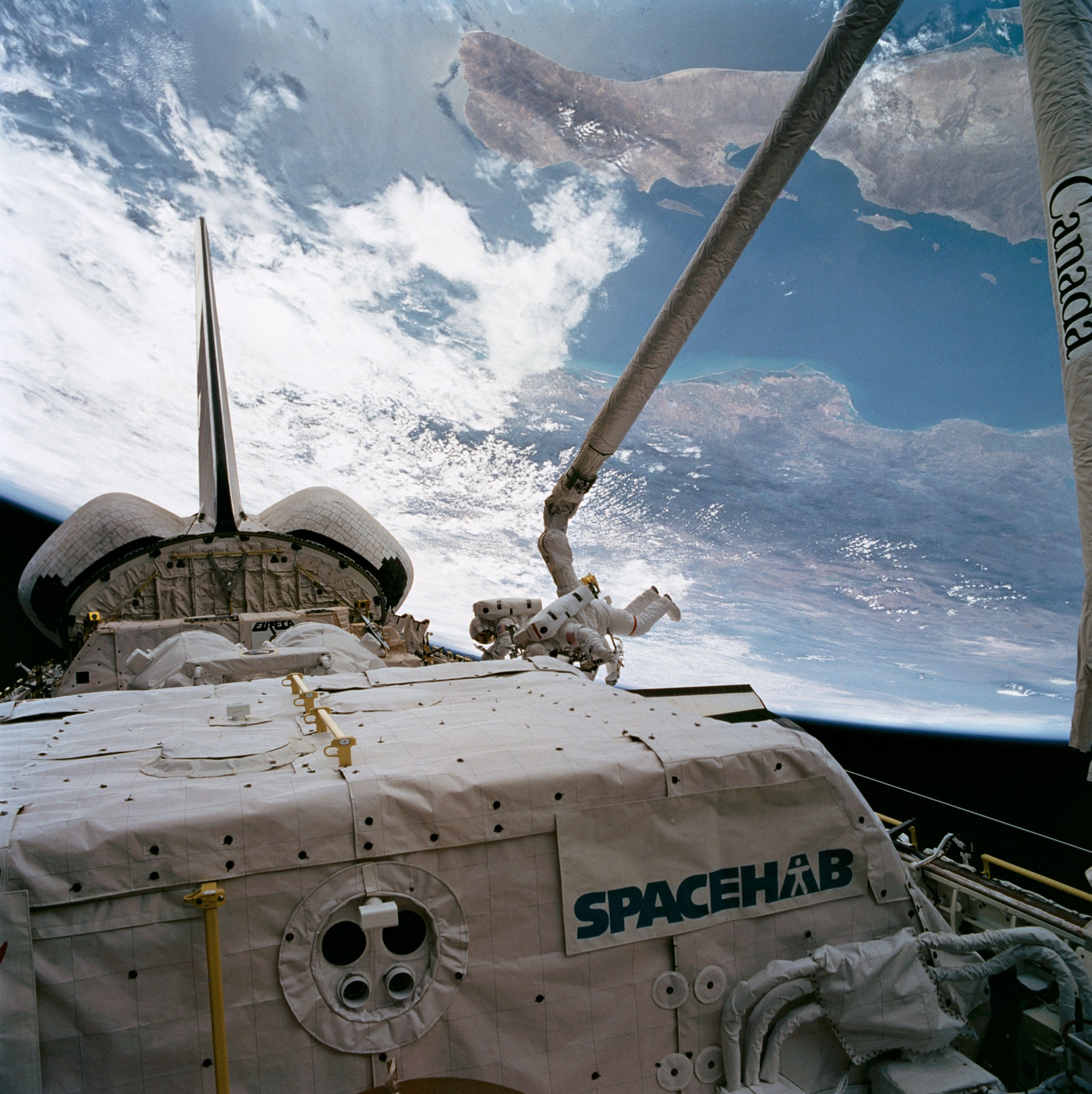
This week in 1993, space shuttle Endeavour, mission STS-57, launched from NASA’s Kennedy Space Center carrying the commercially developed Spacehab – a pressurized laboratory designed to more than double pressurized workspace for crew-tended experiments. Twenty-two experiments were flown, covering materials, life science, and wastewater recycling for the International Space Station. Another primary objective for Endeavour was to capture and return EURECA, the EUropean REtrievable CArrier. Here, astronauts David Low and Jeff Wisoff work near the captured EURECA. The Spacehab module is seen in the foreground and EURECA is partially visible near Endeavour’s aft firewall. Today, the Payload Operations Integration Center at NASA’s Marshall Space Flight Center serves as “science central” for the space station, working 24/7, 365 days a year in support of the orbiting laboratory’s science experiments. The NASA History Program is responsible for generating, disseminating, and preserving NASA’s remarkable history and providing a comprehensive understanding of the institutional, cultural, social, political, economic, technological, and scientific aspects of NASA’s activities in aeronautics and space. For more pictures like this one and to connect to NASA’s history, visit the Marshall History Program’s webpage. (NASA)







